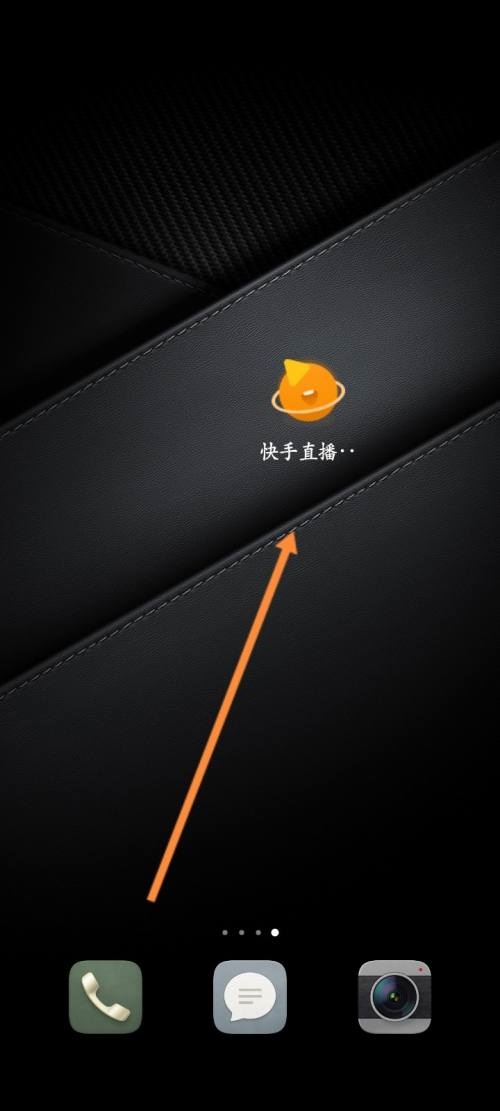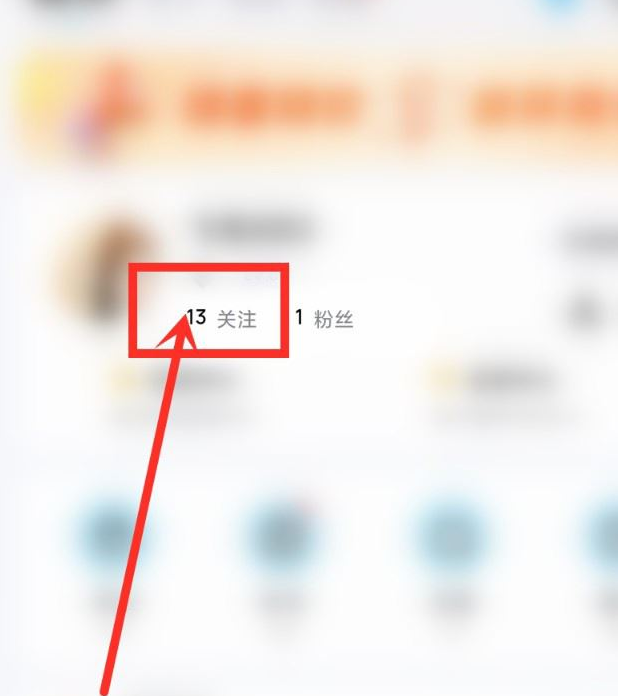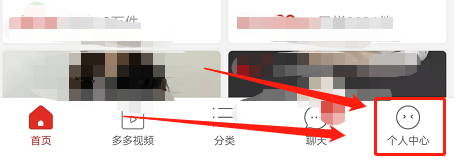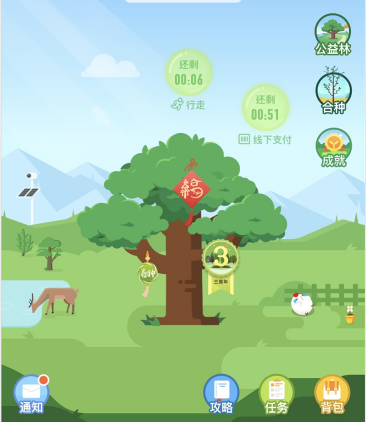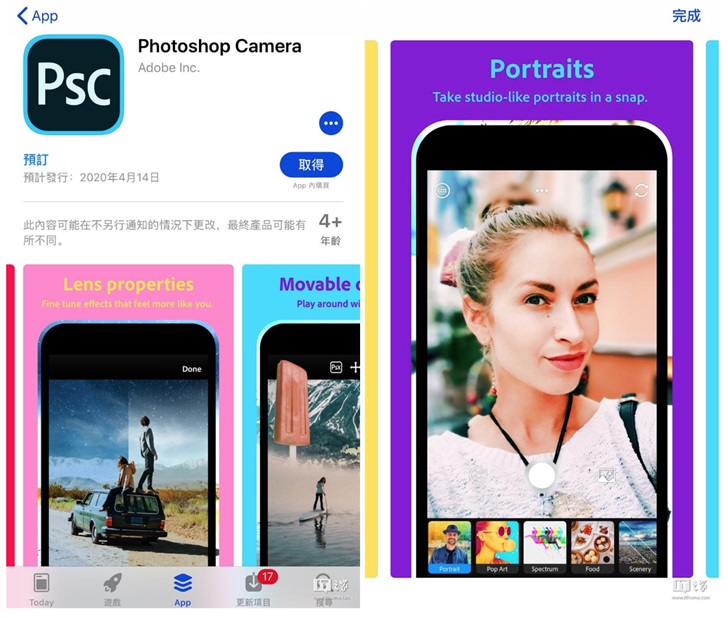由于篇幅有限,阴影部分的内容将在中/下篇介绍。
 【资料图】
【资料图】
话不多说,直入主题。
yarn workspace + lerna: 管理组件库及其生态项目
考虑到组件库整体需要有多边资源支持,比如组件源码,库文档站点,color-gen等类库工具,代码规范配置,vite插件,脚手架,storybook等等,需要分出很多packages,package之间存在彼此联系,因此考虑使用monorepo的管理方式,同时使用yarn作为包管理工具,lerna作为包发布工具。【相关推荐:vuejs视频教程、web前端开发】
在monorepo之前,根目录就是一个workspace,我们直接通过yarn add/remove/run等就可以对包进行管理。但在monorepo项目中,根目录下存在多个子包,yarn 命令无法直接操作子包,比如根目录下无法通过yarn run dev启动子包package-a中的dev命令,这时我们就需要开启yarn的workspaces功能,每个子包对应一个workspace,之后我们就可以通过yarn workspace package-a run dev启动package-a中的dev命令了。
你可能会想,我们直接cd到package-a下运行就可以了,不错,但yarn workspaces的用武之地并不只此,像auto link,依赖提升,单.lock等才是它在monorepo中的价值所在。
启用yarn workspaces
我们在根目录packge.json中启用yarn workspaces:
{ "private": true, "workspaces": [ "packages/*" ]}登录后复制packages目录下的每个直接子目录作为一个workspace。由于我们的根项目是不需要发布出去的,因此设置private为true。
安装lerna并初始化
不得不说,yarn workspaces已经具备了lerna部分功能,之所以使用它,是想借用它的发布工作流以弥补workspaces在monorepo下在这方面的不足。下面我们开始将lerna集成到项目中。
首先我们先安装一下lerna:
# W指workspace-root,即在项目根目录下安装,下同yarn add lerna -D -W# 由于经常使用lerna命令也推荐全局安装yarn global add lernaornpm i lerna -g
登录后复制执行lerna init初始化项目,成功之后会帮我们创建了一个lerna.json文件
lerna init
登录后复制// lerna.json{ "$schema": "node_modules/lerna/schemas/lerna-schema.json", "useWorkspaces": true, "version": "0.0.0"}登录后复制$schema指向的lerna-schema.json描述了如何配置lerna.json,配置此字段后,鼠标悬浮在属性上会有对应的描述。注意,以上的路径值需要你在项目根目录下安装lerna。
useWorkspaces定义了在lerna bootstrap期间是否结合yarn workspace。
由于lerna默认的工作模式是固定模式,即发布时每个包的版本号一致。这里我们修改为independent独立模式,同时将npm客户端设置为yarn。如果你喜欢pnpm,just do it!
// lerna.json{ "version": "independent", "npmClient": "yarn"}登录后复制至此yarn workspaces搭配lerna的monorepo项目就配置好了,非常简单!
额外的lerna配置
By the way!由于项目会使用commitlint对提交信息进行校验是否符合Argular规范,而lerna version默认为我们commit的信息是"Publish",因此我们需要进行一些额外的配置。
// lerna.json{ "command": { "version": { "message": "chore(release): publish", "conventionalCommits": true } }}登录后复制可以看到,我们使用符合Argular团队提交规范的"chore(release): publish"代替默认的"Publish"。
conventionalCommits表示当我们运行lerna version,实际上会运行lerna version --conventional-commits帮助我们生成CHANGELOG.md。
小结
在lerna刚发布的时候,那时的包管理工具还没有可用的workspaces解决方案,因此lerna自身实现了一套解决方案。时至今日,现代的包管理工具几乎都内置了workspaces功能,这使得lerna和yarn有许多功能重叠,比如执行包pkg-a的dev命令lerna run dev --stream --scope=pkg-a,我们完全可以使用yarn workspace pkg-a run dev代替。lerna bootstrap --hoist将安装包提升到根目录,而在yarn workspaces中直接运行yarn就可以了。
Anyway, 使用yarn作为软件包管理工具,lerna作为软件包发布工具,是在monorepo管理方式下一个不错的实践!
集成Lint工具规范化代码
很无奈,我知道大部分人都不喜欢Lint,但对我而言,这是必须的。
集成eslint
packages目录下创建名为@argo-design/eslint-config(非文件夹名)的package
1. 安装eslint
cd argo-eslint-configyarn add eslintnpx eslint --init
登录后复制注意这里没有-D或者--save-dev。选择如下:
安装完成后手动将devDependencies下的依赖拷贝到dependencies中。或者你手动安装这一系列依赖。
2. 使用
// argo-eslint-config/package.json{ scripts: { "lint:script": "npx eslint --ext .js,.jsx,.ts,.tsx --fix --quiet ./" }}登录后复制运行yarn lint:script,将会自动修复代码规范错误警告(如果可以的话)。
3. VSCode保存时自动修复
安装VSCode Eslint插件并进行如下配置,此时在你保存代码时,也会自动修复代码规范错误警告。
// settings.json{ "editor.defaultFormatter": "dbaeumer.vscode-eslint", "editor.codeActionsOnSave": { "source.fixAll.eslint": true }}登录后复制4. 集成到项目全局
在argo-eslint-config中新建包入口文件index.js,并将.eslintrc.js的内容拷贝到index.js中
module.exports = { env: { browser: true, es2021: true, node: true }, extends: ["plugin:vue/vue3-essential", "standard-with-typescript"], overrides: [], parserOptions: { ecmaVersion: "latest", sourceType: "module" }, plugins: ["vue"], rules: {}}登录后复制确保package.json配置main指向我们刚刚创建的index.js。
// argo-eslint-config/package.json{ "main": "index.js"}登录后复制根目录package.json新增如下配置
// argo-eslint-config/package.json{ "devDependencies": { "@argo-design/eslint-config": "^1.0.0" }, "eslintConfig": { "root": true, "extends": [ "@argo-design" ] }}登录后复制最后运行yarn重新安装依赖。
注意包命名与extends书写规则;root表示根配置,对eslint配置文件冒泡查找到此为止。
集成prettier
接下来我们引入formatter工具prettier。首先我们需要关闭eslint规则中那些与prettier冲突或者不必要的规则,最后由prettier代为实现这些规则。前者我们通过eslint-config-prettier实现,后者借助插件eslint-plugin-prettier实现。比如冲突规则尾逗号,eslint-config-prettier帮我们屏蔽了与之冲突的eslint规则:
{ "comma-dangle": "off", "no-comma-dangle": "off", "@typescript-eslint/comma-dangle": "off", "vue/comma-dangle": "off",}登录后复制通过配置eslint规则"prettier/prettier": "error"让错误暴露出来,这些错误交给eslint-plugin-prettier收拾。
prettier配置我们也新建一个package@argo-design/prettier-config。
1. 安装
cd argo-prettier-configyarn add prettieryarn add eslint-config-prettier eslint-plugin-prettier
登录后复制2. 使用
// argo-prettier-config/index.jsmodule.exports = { printWidth: 80, //一行的字符数,如果超过会进行换行,默认为80 semi: false, // 行尾是否使用分号,默认为true trailingComma: "none", // 是否使用尾逗号 bracketSpacing: true // 对象大括号直接是否有空格};登录后复制完整配置参考官网 prettier配置
3. 配置eslint
回到argo-eslint-config/index.js,只需新增如下一条配置即可
module.exports = { "extends": ["plugin:prettier/recommended"]};登录后复制plugin:prettier/recommended指的eslint-plugin-prettierpackage下的recommended.js。该扩展已经帮我们配置好了
{ "extends": ["eslint-config-prettier"], "plugins": ["eslint-plugin-prettier"], "rules": { "prettier/prettier": "error", "arrow-body-style": "off", "prefer-arrow-callback": "off" }}登录后复制4. 集成到项目全局
根目录package.json新增如下配置
{ "devDependencies": { "@argo-design/prettier-config": "^1.0.0" }, "prettier": "@argo-design/prettier-config"}登录后复制运行yarn重新安装依赖。
5. VSCode安装prettier扩展并将其设置成默认格式化工具
// settings.json{ "editor.defaultFormatter": "esbenp.prettier-vscode"}登录后复制集成stylelint
stylelint配置我们也新建一个package@argo-design/stylelint-config。
1. 安装
cd argo-stylelint-configyarn add stylelint stylelint-prettier stylelint-config-prettier stylelint-order stylelint-config-rational-order postcss-html postcss-less# 单独postcss8yarn add postcss@^8.0.0
登录后复制对于结合prettier这里不在赘述。
stylelint-order允许我们自定义样式属性名称顺序。而stylelint-config-rational-order为我们提供了一套合理的开箱即用的顺序。
值得注意的是,stylelint14版本不在默认支持less,sass等预处理语言。并且stylelint14依赖postcss8版本,可能需要单独安装,否则vscode 的stylellint扩展可能提示报错TypeError: this.getPosition is not a function at LessParser.inlineComment....
2. 使用
// argo-stylelint-config/index.jsmodule.exports = { plugins: [ "stylelint-prettier", ], extends: [ // "stylelint-config-standard", "stylelint-config-standard-vue", "stylelint-config-rational-order", "stylelint-prettier/recommended" ], rules: { "length-zero-no-unit": true, // 值为0不需要单位 "plugin/rational-order": [ true, { "border-in-box-model": true, // Border理应作为盒子模型的一部分 默认false "empty-line-between-groups": false // 组之间添加空行 默认false } ] }, overrides: [ { files: ["*.html", "**/*.html"], customSyntax: "postcss-html" }, { files: ["**/*.{less,css}"], customSyntax: "postcss-less" } ]};登录后复制3. 集成到项目全局
根目录package.json新增如下配置
{ "devDependencies": { "@argo-design/stylelint-config": "^1.0.0" }, "stylelint": { "extends": [ "@argo-design/stylelint-config" ] }}登录后复制运行yarn重新安装依赖。
4. VSCode保存时自动修复
VSCode安装Stylelint扩展并添加配置
// settings.json{ "editor.codeActionsOnSave": { "source.fixAll.eslint": true, "source.fixAll.stylelint": true }, "stylelint.validate": ["css", "less", "vue", "html"], "css.validate": false, "less.validate": false}登录后复制修改settings.json之后如不能及时生效,可以重启一下vscode。如果你喜欢,可以将eslint,prettier,stylelint配置安装到全局并集成到编辑器。
集成husky
为防止一些非法的commit或push,我们借助git hooks工具在对代码提交前进行 ESLint 与 Stylelint的校验,如果校验通过,则成功commit,否则取消commit。
1. 安装
# 在根目录安装huskyyarn add husky -D -W
登录后复制2. 使用
npm pkg set scripts.prepare="husky install"npm run prepare# 添加pre-commit钩子,在提交前运行代码lintnpx husky add .husky/pre-commit "yarn lint"
登录后复制至此,当我们执行git commit -m "xxx"时就会先执行lint校验我们的代码,如果lint通过,成功commit,否则终止commit。具体的lint命令请自行添加。
集成lint-staged: 仅校验staged中文件
现在,当我们git commit时,会对整个工作区的代码进行lint。当工作区文件过多,lint的速度就会变慢,进而影响开发体验。实际上我们只需要对暂存区中的文件进行lint即可。下面我们引入·lint-staged解决我们的问题。
1. 安装
在根目录安装lint-staged
yarn add lint-staged -D -W
登录后复制2. 使用
在根目录package.json中添加如下的配置:
{ "lint-staged": { "*.{js,ts,jsx,tsx}": [ "eslint --fix", "prettier --write" ], "*.{less,css}": [ "stylelint --fix", "prettier --write" ], "**/*.vue": [ "eslint --fix", "stylelint --fix", "prettier --write" ] }}登录后复制在monorepo中,lint-staged运行时,将始终向上查找并应用最接近暂存文件的配置,因此我们可以在根目录下的package.json中配置lint-staged。值得注意的是,每个glob匹配的数组中的命令是从左至右依次运行,和webpack的loder应用机制不同!
最后,我们在.husky文件夹中找到pre-commit,并将yarn lint修改为npx --no-install lint-staged。
#!/usr/bin/env sh. "$(dirname -- "$0")/_/husky.sh"npx --no-install lint-staged
登录后复制至此,当我们执行git commit -m "xxx"时,lint-staged会如期运行帮我们校验staged(暂存区)中的代码,避免了对工作区的全量检查。
集成commitlint: 规范化commit message
除了代码规范检查之后,Git 提交信息的规范也是不容忽视的一个环节,规范精准的 commit 信息能够方便自己和他人追踪项目和把控进度。这里,我们使用大名鼎鼎的Angular团队提交规范。
commit message格式规范
commit message 由 Header、Body、Footer组成。其中Herder时必需的,Body和Footer可选。
Header
Header 部分包括三个字段 type、scope和 subject。
():
登录后复制type
其中type 用于说明 commit 的提交类型(必须是以下几种之一)。
| 值 | 描述 |
|---|---|
| feat | Feature) 新增一个功能 |
| fix | Bug修复 |
| docs | Documentation) 文档相关 |
| style | 代码格式(不影响功能,例如空格、分号等格式修正),并非css样式更改 |
| refactor | 代码重构 |
| perf | Performent) 性能优化 |
| test | 测试相关 |
| build | 构建相关(例如 scopes: webpack、gulp、npm 等) |
| ci | 更改持续集成软件的配置文件和 package 中的 scripts 命令,例如 scopes: Travis, Circle 等 |
| chore | 变更构建流程或辅助工具,日常事务 |
| revert | git revert |
scope
scope 用于指定本次 commit 影响的范围。
subject
subject 是本次 commit 的简洁描述,通常遵循以下几个规范:
用动词开头,第一人称现在时表述,例如:change 代替 changed 或 changes
第一个字母小写
结尾不加句号.
Body(可选)
body 是对本次 commit 的详细描述,可以分成多行。跟 subject 类似。
Footer(可选)
如果本次提交的代码是突破性的变更或关闭Issue,则 Footer 必需,否则可以省略。
集成commitizen(可选)
我们可以借助工具帮我们生成规范的message。
1. 安装
yarn add commitizen -D -W
登录后复制2. 使用
安装适配器
yarn add cz-conventional-changelog -D -W
登录后复制这行命令做了两件事:
安装cz-conventional-changelog到开发依赖
在根目录下的package.json中增加了:
"config": { "commitizen": { "path": "./node_modules/cz-conventional-changelog" }}登录后复制添加npm scriptscm
"scripts": { "cm": "cz"},登录后复制至此,执行yarn cm,就能看到交互界面了!跟着交互一步步操作就能自动生成规范的message了。
集成commitlint: 对最终提交的message进行校验
1. 安装
首先在根目录安装依赖:
yarn add commitlint @commitlint/cli @commitlint/config-conventional -D -W
登录后复制2. 使用
接着新建.commitlintrc.js:
module.exports = { extends: ["@commitlint/config-conventional"]};登录后复制最后向husky中添加commit-msg钩子,终端执行:
npx husky add .husky/commit-msg "npx --no-install commitlint -e $HUSKY_GIT_PARAMS"
登录后复制执行成功之后就会在.husky文件夹中看到commit-msg文件了:
#!/usr/bin/env sh. "$(dirname -- "$0")/_/husky.sh"npx --no-install commitlint -e
登录后复制至此,当你提交代码时,如果pre-commit钩子运行成功,紧接着在commit-msg钩子中,commitlint会如期运行对我们提交的message进行校验。
关于lint工具的集成到此就告一段落了,在实际开发中,我们还会对lint配置进行一些小改动,比如ignore,相关rules等等。这些和具体项目有关,我们不会变更package里的配置。
千万别投机取巧拷贝别人的配置文件!复制一时爽,代码火葬场。
图标库
巧妇难为无米之炊。组件库通常依赖很多图标,因此我们先开发一个支持按需引入的图标库。
假设我们现在已经拿到了一些漂亮的svg图标,我们要做的就是将每一个图标转化生成.vue组件与一个组件入口index.ts文件。然后再生成汇总所有组件的入口文件。比如我们现在有foo.svg与bar.svg两个图标,最终生成的文件及结构如下:
相应的内容如下:
// bar.tsimport _Bar from "./bar.vue";const Bar = Object.assign(_Bar, { install: (app) => { app.component(_Bar.name, _Bar); }});export default Bar;登录后复制// foo.tsimport _Foo from "./foo.vue";const Foo = Object.assign(_Foo, { install: (app) => { app.component(_Foo.name, _Foo); }});export default Foo;登录后复制// argoIcon.tsimport Foo from "./foo";import Bar from "./bar";const icons = [Foo, Bar];const install = (app) => { for (const key of Object.keys(icons)) { app.use(icons[key]); }};const ArgoIcon = { ...icons, install};export default ArgoIcon;登录后复制// index.tsexport { default } from "./argoIcon";export { default as Foo } from "./foo";export { default as Bar } from "./bar";登录后复制之所以这么设计是由图标库最终如何使用决定的,除此之外argoIcon.ts也将会是打包umd的入口文件。
// 全量引入import ArgoIcon from "图标库";app.use(ArgoIcon); // 按需引入import { Foo } from "图标库";app.use(Foo);登录后复制图标库的整个构建流程大概分为以下3步:
1. svg图片转.vue文件
整个流程很简单,我们通过glob匹配到.svg拿到所有svg的路径,对于每一个路径,我们读取svg的原始文本信息交由第三方库svgo处理,期间包括删除无用代码,压缩,自定义属性等,其中最重要的是为svg标签注入我们想要的自定义属性,就像这样:
登录后复制之后这段svgHtml会传送给我们预先准备好的摸板字符串:
const template = ` ${svgHtml}<script setup>defineProps({ "stroke-linecap": String; // ... }) // 省略逻辑代码...</script>`登录后复制为摸板字符串填充数据后,通过fs模块的writeFile生成我们想要的.vue文件。
2. 打包vue组件
在打包构建方案上直接选择vite为我们提供的lib模式即可,开箱即用,插件扩展(后面会讲到),基于rollup,能帮助我们打包生成ESM,这是按需引入的基础。当然,commonjs与umd也是少不了的。整个过程我们通过Vite 的JavaScript API实现:
import { build } from "vite";import fs from "fs-extra";const CWD = process.cwd();const ES_DIR = resolve(CWD, "es");const LIB_DIR = resolve(CWD, "lib");interface compileOptions { umd: boolean; target: "component" | "icon";}async function compileComponent({ umd = false, target = "component"}: compileOptions): Promise { await fs.emptyDir(ES_DIR); await fs.emptyDir(LIB_DIR); const config = getModuleConfig(target); await build(config); if (umd) { await fs.emptyDir(DIST_DIR); const umdConfig = getUmdConfig(target); await build(umdConfig); }} 登录后复制import { InlineConfig } from "vite";import glob from "glob";const langFiles = glob.sync("components/locale/lang/*.ts");export default function getModuleConfig(type: "component" | "icon"): InlineConfig { const entry = "components/index.ts"; const input = type === "component" ? [entry, ...langFiles] : entry; return { mode: "production", build: { emptyOutDir: true, minify: false, brotliSize: false, rollupOptions: { input, output: [ { format: "es", // 打包模式 dir: "es", // 产物存放路径 entryFileNames: "[name].js", // 入口模块的产物文件名 preserveModules: true, // 保留模块结构,否则所有模块都将打包在一个bundle文件中 /* * 保留模块的根路径,该值会在打包后的output.dir中被移除 * 我们的入口是components/index.ts,打包后文件结构为:es/components/index.js * preserveModulesRoot设为"components",打包后就是:es/index.js */ preserveModulesRoot: "components" }, { format: "commonjs", dir: "lib", entryFileNames: "[name].js", preserveModules: true, preserveModulesRoot: "components", exports: "named" // 导出模式 } ] }, // 开启lib模式 lib: { entry, formats: ["es", "cjs"] } }, plugins: [ // 自定义external忽略node_modules external(), // 打包声明文件 dts({ outputDir: "es", entryRoot: C_DIR }) ] };};登录后复制export default function getUmdConfig(type: "component" | "icon"): InlineConfig { const entry = type === "component" ? "components/argo-components.ts" : "components/argo-icons.ts"; const entryFileName = type === "component" ? "argo" : "argo-icon"; const name = type === "component" ? "Argo" : "ArgoIcon"; return { mode: "production", build: { target: "modules", // 支持原生 ES 模块的浏览器 outDir: "dist", // 打包产物存放路径 emptyOutDir: true, // 如果outDir在根目录下,则清空outDir sourcemap: true, // 生成sourcemap minify: false, // 是否压缩 brotliSize: false, // 禁用 brotli 压缩大小报告。 rollupOptions: { // rollup打包选项 external: "vue", // 匹配到的模块不会被打包到bundle output: [ { format: "umd", // umd格式 entryFileNames: `${entryFileName}.js`, // 即bundle名 globals: { /* * format为umd/iife时,标记外部依赖vue,打包后以Vue取代 * 未定义时打包结果如下 * var ArgoIcon = function(vue2) {}(vue); * rollup自动猜测是vue,但实际是Vue.这会导致报错 * 定义后 * var ArgoIcon = function(vue) {}(Vue); */ vue: "Vue" } }, { format: "umd", entryFileNames: `${entryFileName}.min.js`, globals: { vue: "Vue" }, plugins: [terser()] // terser压缩 }, ] }, // 开启lib模式 lib: { entry, // 打包入口 name // 全局变量名 } }, plugins: [vue(), vueJsx()] };};登录后复制export const CWD = process.cwd();export const C_DIR = resolve(CWD, "components");
登录后复制可以看到,我们通过type区分组件库和图标库打包。实际上打包图标库和组件库都是差不多的,组件库需要额外打包国际化相关的语言包文件。图标样式内置在组件之中,因此也不需要额外打包。
3. 打包声明文件
我们直接通过第三方库 vite-plugin-dts 打包图标库的声明文件。
import dts from "vite-plugin-dts";plugins: [ dts({ outputDir: "es", entryRoot: C_DIR })]登录后复制关于打包原理可参考插件作者的这片文章。
lequ7.com/guan-yu-qia…
4. 实现按需引入
我们都知道实现tree-shaking的一种方式是基于ESM的静态性,即在编译的时候就能摸清依赖之间的关系,对于"孤儿"会残忍的移除。但是对于import "icon.css"这种没导入导出的模块,打包工具并不知道它是否具有副作用,索性移除,这样就导致页面缺少样式了。sideEffects就是npm与构建工具联合推出的一个字段,旨在帮助构建工具更好的为npm包进行tree-shaking。
使用上,sideEffects设置为false表示所有模块都没有副作用,也可以设置数组,每一项可以是具体的模块名或Glob匹配。因此,实现图标库的按需引入,只需要在argo-icons项目下的package.json里添加以下配置即可:
{ "sideEffects": false,}登录后复制这将告诉构建工具,图标库没有任何副作用,一切没有被引入的代码或模块都将被移除。前提是你使用的是ESM。
指定入口
Last but important!当图标库在被作为npm包导入时,我们需要在package.json为其配置相应的入口文件。
{ "main": "lib/index.js", // 以esm形式被引入时的入口 "module": "es/index.js", // 以commonjs形式被引入时的入口 "types": "es/index.d.ts" // 指定声明文件}登录后复制引入storybook:是时候预览我们的成果了!
顾名思义,storybook就是一本"书",讲了很多个"故事"。在这里,"书"就是argo-icons,我为它讲了3个故事:
基本使用
按需引入
使用iconfont.cn项目
初始化storybook
新建@argo-design/ui-storybookpackage,并在该目录下运行:
npx storybook init -t vue3 -b webpack5
登录后复制-t (即--type): 指定项目类型,storybook会根据项目依赖及配置文件等推算项目类型,但显然我们仅仅是通过npm init新创建的项目,storybook无法自动判断项目类型,故需要指定type为vue3,然后storybook会帮我们初始化storybook vue3 app。
-b (--builder): 指定构建工具,默认是webpack4,另外支持webpack5, vite。这里指定webpack5,否则后续会有类似报错:cannot read property of undefine(reading "get")...因为storybook默认以webpack4构建,但是@storybook/vue3依赖webpack5,会冲突导致报错。这里是天坑!!
storybook默认使用yarn安装,如需指定npm请使用--use-npm。
这行命令主要帮我们做以下事情:
注入必要的依赖到packages.json(如若没有指定-s,将帮我们自动安装依赖)。
注入启动,打包项目的脚本。
添加Storybook配置,详见.storybook目录。
添加Story范例文件以帮助我们上手,详见stories目录。
其中1,2步具体代码如下:
{ "scripts": { "storybook": "start-storybook -p 6006", "build-storybook": "build-storybook" }, "devDependencies": { "@storybook/vue3": "^6.5.13", "@storybook/addon-links": "^6.5.13", "@storybook/addon-essentials": "^6.5.13", "@storybook/addon-actions": "^6.5.13", "@storybook/addon-interactions": "^6.5.13", "@storybook/testing-library": "^0.0.13", "vue-loader": "^16.8.3", "@storybook/builder-webpack5": "^6.5.13", "@storybook/manager-webpack5": "^6.5.13", "@babel/core": "^7.19.6", "babel-loader": "^8.2.5" }}登录后复制接下来把目光放到.storybook下的main.js与preview.js
preview.js
preview.js可以具名导出parameters,decorators,argTypes,用于全局配置UI(stories,界面,控件等)的渲染行为。比如默认配置中的controls.matchers:
export const parameters = { controls: { matchers: { color: /(background|color)$/i, date: /Date$/ } }};登录后复制它定义了如果属性值是以background或color结尾,那么将为其启用color控件,我们可以选择或输入颜色值,date同理。
除此之外你可以在这里引入全局样式,注册组件等等。更多详情见官网 Configure story rendering
main.js
最后来看看最重要的项目配置文件。
module.exports = { stories: [ "../stories/**/*.stories.mdx", "../stories/**/*.stories.@(js|jsx|ts|tsx)" ], addons: [ "@storybook/addon-links", "@storybook/addon-essentials", "@storybook/addon-interactions" ], framework: "@storybook/vue3", core: { builder: "@storybook/builder-webpack5" },}登录后复制stories, 即查找stroy文件的Glob。
addons, 配置需要的扩展。庆幸的是,当前一些重要的扩展都已经集成到@storybook/addon-essentials。
framework和core即是我们初识化传递的-t vue3 -b webpack5。
更多详情见官网 Configure your Storybook project
配置并启动storybook
less配置
由于项目使用到less因此我们需要配置一下less,安装less以及相关loader。来到.storybook/main.js
module.exports = { webpackFinal: (config) => { config.module.rules.push({ test: /.less$/, use: [ { loader: "style-loader" }, { loader: "css-loader" }, { loader: "less-loader", options: { lessOptions: { javascriptEnabled: true } } } ] }); return config; },}登录后复制配置JSX
storybook默认支持解析jsx/tsx,但你如果需要使用jsx书写vue3的stories,仍需要安装相关插件。
在argo-ui-storybook下安装 @vue/babel-plugin-jsx
yarn add @vue/babel-plugin-jsx -D
登录后复制新建.babelrc
{ "plugins": ["@vue/babel-plugin-jsx"]}登录后复制关于如何书写story,篇幅受限,请自行查阅范例文件或官网。
配置完后终端执行yarn storybook即可启动我们的项目,辛苦的成果也将跃然纸上。
对于UI,在我们的组件库逐渐丰富之后,将会自建一个独具组件库风格的文档站点,拭目以待。
组件库
组件通信
在Vue2时代,组件跨层级通信方式可谓“百花齐放”,provide/inject就是其中一种。时至今日,在composition,es6,ts加持下,provide/inject可以更加大展身手。
provide/inject原理
在创建组件实例时,会在自身挂载一个provides对象,默认指向父实例的provides。
const instance = { provides: parent ? parent.provides : Object.create(appContext.provides)}登录后复制appContext.provides即createApp创建的app的provides属性,默认是null
在自身需要为子组件供数据时,即调用provide()时,会创建一个新对象,该对象的原型指向父实例的provides,同时将provide提供的选项添加到新对象上,这个新对象就是实例新的provides值。代码简化就是
function provide(key, value) { const parentProvides = currentInstance.parent && currentInstance.parent.provides; const newObj = Object.create(parentProvides); currentInstance.provides = newObj; newObj[key] = value;}登录后复制而inject的实现原理则时通过key去查找祖先provides对应的值:
function inject(key, defaultValue) { const instance = currentInstance; const provides = instance.parent == null ? instance.vnode.appContent && instance.vnode.appContent.provides :instance.parent.provides; if(provides && key in provides) { return provides[key] }}登录后复制你可能会疑惑,为什么这里是直接去查父组件,而不是先查自身实例的provides呢?前面不是说实例的provides默认指向父实例的provides么。但是请注意,是“默认”。如果当前实例执行了provide()是不是把instance.provides“污染”了呢?这时再执行inject(key),如果provide(key)的key与你inject的key一致,就从当前实例provides取key对应的值了,而不是取父实例的provides!
最后,我画了2张图帮助大家理解
新增button组件并完成打包
篇幅有限,本文不会对组件的具体实现讲解哦,简单介绍下文件
__demo__组件使用事例constants.ts定义的常量context.ts上下文相关interface.ts组件接口TEMPLATE.md用于生成README.md的模版button/style下存放组件样式style下存放全局样式打包esm与commonjs模块
关于打包组件的esm与commonjs模块在之前打包图标库章节已经做了介绍,这里不再赘述。
打包样式
相对于图标库,组件库的打包需要额外打包样式文件,大概流程如下:
生成总入口components/index.less并编译成css。
编译组件less。
生成dist下的argo.css与argo.min.css。
构建组件style/index.ts。
1. 生成总入口components/index.less
import path from "path";import { outputFileSync } from "fs-extra";import glob from "glob";export const CWD = process.cwd();export const C_DIR = path.resolve(CWD, "components");export const lessgen = async () => { let lessContent = `@import "./style/index.less";\n`; // 全局样式文件 const lessFiles = glob.sync("**/style/index.less", { cwd: C_DIR, ignore: ["style/index.less"] }); lessFiles.forEach((value) => { lessContent += `@import "./${value}";\n`; }); outputFileSync(path.resolve(C_DIR, "index.less"), lessContent); log.success("genless", "generate index.less success!");};登录后复制代码很简单,值得一提就是为什么不将lessContent初始化为空,glob中将ignore移除,这不是更简洁吗。这是因为style/index.less作为全局样式,我希望它在引用的最顶部。最终将会在components目录下生成index.less内容如下:
@import "./style/index.less";@import "./button/style/index.less";/* other less of components */
登录后复制2. 打包组件样式
import path from "path";import { readFile, copySync } from "fs-extra"import { render } from "less";export const ES_DIR = path.resolve(CWD, "es");export const LIB_DIR = path.resolve(CWD, "lib");const less2css = (lessPath: string): string => { const source = await readFile(lessPath, "utf-8"); const { css } = await render(source, { filename: lessPath }); return css;}const files = glob.sync("**/*.{less,js}", { cwd: C_DIR});for (const filename of files) { const lessPath = path.resolve(C_DIR, `${filename}`); // less文件拷贝到es和lib相对应目录下 copySync(lessPath, path.resolve(ES_DIR, `${filename}`)); copySync(lessPath, path.resolve(LIB_DIR, `${filename}`)); // 组件样式/总入口文件/全局样式的入口文件编译成css if (/index.less$/.test(filename)) { const cssFilename = filename.replace(".less", ".css"); const ES_DEST = path.resolve(ES_DIR, `${cssFilename}`); const LIB_DEST = path.resolve(LIB_DIR, `${cssFilename}`); const css = await less2css(lessPath); writeFileSync(ES_DEST, css, "utf-8"); writeFileSync(LIB_DEST, css, "utf-8"); }}登录后复制3. 生成dist下的argo.css与argo.min.css
import path from "path";import CleanCSS, { Output } from "clean-css";import { ensureDirSync } from "fs-extra";export const DIST_DIR = path.resolve(CWD, "dist");console.log("start build components/index.less to dist/argo(.min).css");const indexCssPath = path.resolve(ES_DIR, "index.css");const css = readFileSync(indexCssPath, "utf8");const minContent: Output = new CleanCSS().minify(css);ensureDirSync(DIST_DIR);writeFileSync(path.resolve("dist/argo.css"), css);writeFileSync(path.resolve("dist/argo.min.css"), minContent.styles);log.success(`build components/index.less to dist/argo(.min).css`);登录后复制其中最重要的就是使用clean-css压缩css。
4. 构建组件style/index.ts
如果你使用过babel-plugin-import,那一定熟悉这项配置:
通过指定style: true,babel-plugin-import可以帮助我们自动引入组件的less文件,如果你担心less文件定义的变量会被覆盖或冲突,可以指定"css",即可引入组件的css文件样式。
这一步就是要接入这点。但目前不是很必要,且涉及到vite插件开发,暂可略过,后面会讲。
来看看最终实现的样子。
其中button/style/index.js内容也就是导入less:
import "../../style/index.less";import "./index.less";
登录后复制button/style/css.js内容也就是导入css:
import "../../style/index.css";import "./index.css";
登录后复制最后你可能会好奇,诸如上面提及的compileComponent,compileStyle等函数是如何被调度使用的,这其实都归功于脚手架@argo-design/scripts。当它作为依赖被安装到项目中时,会为我们提供诸多命令如argo-scripts genicon,argo-scripts compileComponent等,这些函数都在执行命令时被调用。
配置sideEffects
"sideEffects": [ "dist/*", "es/**/style/*", "lib/**/style/*", "*.less"]
登录后复制国际化
基本实现
// locale.tsimport { ref, reactive, computed, inject } from "vue";import { isString } from "../_utils/is";import zhCN from "./lang/zh-cn";export interface ArgoLang { locale: string; button: { defaultText: string; }}type ArgoI18nMessages = Record;// 默认使用中文const LOCALE = ref("zh-CN");const I18N_MESSAGES = reactive({ "zh-CN": zhCN});// 添加语言包export const addI18nMessages = ( messages: ArgoI18nMessages, options?: { overwrite?: boolean; }) => { for (const key of Object.keys(messages)) { if (!I18N_MESSAGES[key] || options?.overwrite) { I18N_MESSAGES[key] = messages[key]; } }};// 切换语言包export const useLocale = (locale: string) => { if (!I18N_MESSAGES[locale]) { console.warn(`use ${locale} failed! Please add ${locale} first`); return; } LOCALE.value = locale;};// 获取当前语言export const getLocale = () => { return LOCALE.value;};export const useI18n = () => { const i18nMessage = computed(() => I18N_MESSAGES[LOCALE.value]); const locale = computed(() => i18nMessage.value.locale); const transform = (key: string): string => { const keyArray = key.split("."); let temp: any = i18nMessage.value; for (const keyItem of keyArray) { if (!temp[keyItem]) { return key; } temp = temp[keyItem]; } return temp; }; return { locale, t: transform };}; 登录后复制添加需要支持的语言包,这里默认支持中文和英文。
// lang/zh-CN.tsconst lang: ArgoLang = { locale: "zh-CN", button: { defaultText: "按钮" },}登录后复制// lang/en-US.tsconst lang: ArgoLang = { locale: "en-US", button: { defaultText: "Button", },}登录后复制button组件中接入
<script>import { defineComponent } from "vue";import { useI18n } from "../locale";export default defineComponent({ name: "Button", setup(props, { emit }) { const { t } = useI18n(); return { t }; }});</script>登录后复制Button的国际化仅做演示,实际上国际化在日期日历等组件中才有用武之地。
国际化演示
argo-ui-storybook/stories中添加locale.stories.ts
import { computed } from "vue";import { Meta, StoryFn } from "@storybook/vue3";import { Button, addI18nMessages, useLocale, getLocale} from "@argo-design/argo-ui/components/index"; // 源文件形式引入方便开发时调试import enUS from "@argo-design/argo-ui/components/locale/lang/en-us";interface Args {}export default { title: "Component/locale", argTypes: {}} as Meta;const BasicTemplate: StoryFn = (args) => { return { components: { Button }, setup() { addI18nMessages({ "en-US": enUS }); const currentLang = computed(() => getLocale()); const changeLang = () => { const lang = getLocale(); if (lang === "en-US") { useLocale("zh-CN"); } else { useLocale("en-US"); } }; return { args, changeLang, currentLang }; }, template: ` 内部切换语言,当前语言: {{currentLang}}
仅在未提供ConfigProvider时生效
` };};export const Basic = BasicTemplate.bind({});Basic.storyName = "基本使用";Basic.args = {}; 登录后复制.preview.js中全局引入组件库样式
import "@argo-design/argo-ui/components/index.less";
登录后复制终端启动项目就可以看到效果了。
实现config-provider组件
通常组件库都会提供config-provider组件来使用国际化,就像下面这样
登录后复制下面我们来实现一下config-provider组件:
}, }, setup(props, { slots }) { const { locale } = toRefs(props); const config = reactive({ locale, }); provide(configProviderInjectionKey, config); }});</script>
登录后复制export interface ConfigProvider { locale?: ArgoLang;}export const configProviderInjectionKey: InjectionKey = Symbol("ArgoConfigProvider"); 登录后复制修改locale/index.ts中计算属性i18nMessage的获取逻辑
import { configProviderInjectionKey } from "../config-provider/context";export const useI18n = () => { const configProvider = inject(configProviderInjectionKey, undefined); const i18nMessage = computed( () => configProvider?.locale ?? I18N_MESSAGES[LOCALE.value] ); const locale = computed(() => i18nMessage.value.locale); const transform = (key: string): string => { const keyArray = key.split("."); let temp: any = i18nMessage.value; for (const keyItem of keyArray) { if (!temp[keyItem]) { return key; } temp = temp[keyItem]; } return temp; }; return { locale, t: transform };}; 登录后复制编写stories验证一下:
const ProviderTemplate: StoryFn = (args) => { return { components: { Button, ConfigProvider }, render() { return ( ); } };};export const Provider = ProviderTemplate.bind({});Provider.storyName = "在config-provider中使用";Provider.args = { // 在这里把enUS传给ConfigProvider的locale locale: enUS};
登录后复制以上stories使用到了jsx,请确保安装并配置了@vue/babel-plugin-jsx
可以看到,Button默认是英文的,表单控件也接收到enUS语言包了,符合预期。
自动引入组件样式
值得注意的是,上面提到的按需引入只是引入了组件js逻辑代码,但对于样式依然没有引入。
下面我们通过开发vite插件vite-plugin-auto-import-style,让组件库可以自动引入组件样式。
效果演示
现在我们书写的代码如下,现在我们已经知道了,这样仅仅是加载了组件而已。
import { createApp } from "vue";import App from "./App.vue";import { Button, Empty, ConfigProvider } from "@argo-design/argo-ui";import { Anchor } from "@argo-design/argo-ui";createApp(App) .use(Button) .use(Empty) .use(ConfigProvider) .use(Anchor) .mount("#root");登录后复制添加插件之前:
添加插件之后:
import { defineConfig } from "vite";import argoAutoInjectStyle from "vite-plugin-argo-auto-inject-style";export default defineConfig({ plugins: [ argoAutoInjectStyle({ libs: [ { libraryName: "@argo-design/argo-ui", resolveStyle: (name) => { return `@argo-design/argo-ui/es/${name}/style/index.js`; } } ] }) ]})登录后复制插件实现
实践之前浏览一遍官网插件介绍是个不错的选择。插件API
vite插件是一个对象,通常由name和一系列钩子函数组成:
{ name: "vite-plugin-vue-auto-inject-style", configResolved(config) {}}登录后复制常用钩子
config
在vite.config.ts被解析完成后触发。常用于扩展配置。可以直接在config上定义或返回一个对象,该对象会尝试与配置文件vite.config.ts中导出的配置对象深度合并。
configResolved
在解析完所有配置时触发。形参config表示最终确定的配置对象。通常将该配置保存起来在有需要时提供给其它钩子使用。
resolveId
开发阶段每个传入模块请求时被调用,常用于解析模块路径。返回string或对象将终止后续插件的resolveId钩子执行。
load
resolveId之后调用,可自定义模块加载内容
transform
load之后调用,可自定义修改模块内容。这是一个串行钩子,即多个插件实现了这个钩子,下个插件的transform需要等待上个插件的transform钩子执行完毕。上个transform返回的内容将传给下个transform钩子。
为了让插件完成自动引入组件样式,我们需要完成如下工作:
过滤出我们想要的文件。
对文件内容进行AST解析,将符合条件的import语句提取出来。
然后解析出具体import的组件。
最后根据组件查找到样式文件路径,生成导入样式的语句字符串追加到import语句后面即可。
其中过滤我们使用rollup提供的工具函数createFilter;
AST解析借助es-module-lexer,非常出名,千万级周下载量。
import type { Plugin } from "vite";import { createFilter } from "@rollup/pluginutils";import { ExportSpecifier, ImportSpecifier, init, parse } from "es-module-lexer";import MagicString from "magic-string";import * as changeCase from "change-case";import { Lib, VitePluginOptions } from "./types";const asRE = /\s+as\s+\w+,?/g;// 插件本质是一个对象,但为了接受在配置时传递的参数,我们通常在一个函数中将其返回。// 插件默认开发和构建阶段都会应用export default function(options: VitePluginOptions): Plugin { const { libs, include = ["**/*.vue", "**/*.ts", "**/*.tsx"], exclude = "node_modules/**" } = options; const filter = createFilter(include, exclude); return { name: "vite:argo-auto-inject-style", async transform(code: string, id: string) { if (!filter(id) || !code || !needTransform(code, libs)) { return null; } await init; let imports: readonly ImportSpecifier[] = []; imports = parse(code)[0]; if (!imports.length) { return null; } let s: MagicString | undefined; const str = () => s || (s = new MagicString(code)); for (let index = 0; index < imports.length; index++) { // ss import语句开始索引 // se import语句介结束索引 const { n: moduleName, se, ss } = imports[index]; if (!moduleName) continue; const lib = getLib(moduleName, libs); if (!lib) continue; // 整条import语句 const importStr = code.slice(ss, se); // 拿到每条import语句导入的组件集合 const importItems = getImportItems(importStr); let endIndex = se + 1; for (const item of importItems) { const componentName = item.n; const paramName = changeCase.paramCase(componentName); const cssImportStr = `\nimport "${lib.resolveStyle(paramName)}";`; str().appendRight(endIndex, cssImportStr); } } return { code: str().toString() }; } };}export type { Lib, VitePluginOptions };function getLib(libraryName: string, libs: Lib[]) { return libs.find((item) => item.libraryName === libraryName);}function getImportItems(importStr: string) { if (!importStr) { return []; } const matchItem = importStr.match(/{(.+?)}/gs); const formItem = importStr.match(/from.+/gs); if (!matchItem) return []; const exportStr = `export ${matchItem[0].replace(asRE, ",")} ${formItem}`; let importItems: readonly ExportSpecifier[] = []; try { importItems = parse(exportStr)[1]; } catch (error) { console.log(error); } return importItems;}function needTransform(code: string, libs: Lib[]) { return libs.some(({ libraryName }) => { return new RegExp(`("${libraryName}")|("${libraryName}")`).test(code); });}登录后复制export interface Lib { libraryName: string; resolveStyle: (name: string) => string;}export type RegOptions = | string | RegExp | Array | null | undefined;export interface VitePluginOptions { include?: RegOptions; exclude?: RegOptions; libs: Lib[];} 登录后复制换肤与暗黑风格
换肤
在我们的less样式中,会定义一系列如下的颜色梯度变量,其值由color-palette函数完成:
@blue-6: #3491fa;@blue-1: color-palette(@blue-6, 1);@blue-2: color-palette(@blue-6, 2);@blue-3: color-palette(@blue-6, 3);@blue-4: color-palette(@blue-6, 4);@blue-5: color-palette(@blue-6, 5);@blue-7: color-palette(@blue-6, 7);@blue-8: color-palette(@blue-6, 8);@blue-9: color-palette(@blue-6, 9);@blue-10: color-palette(@blue-6, 10);
登录后复制基于此,我们再演化出具体场景下的颜色梯度变量:
@primary-1: @blue-1;@primary-2: @blue-2;@primary-3: @blue-3;// 以此类推...@success-1: @green-1;@success-2: @green-2;@success-3: @green-3;// 以此类推.../* @warn @danger @info等等 */
登录后复制有了具体场景下的颜色梯度变量,我们就可以设计变量供给组件消费了:
@color-primary-1: @primary-1;@color-primary-2: @primary-2;@color-primary-3: @primary-3;/* ... */
登录后复制.argo-btn.arco-btn-primary { color: #fff; background-color: @color-primary-1;}登录后复制在使用组件库的项目中我们通过 Less 的 ·modifyVars功能修改变量值:
Webpack配置
// webpack.config.jsmodule.exports = { rules: [{ test: /.less$/, use: [{ loader: "style-loader", }, { loader: "css-loader", }, { loader: "less-loader", options: { lessOptions: { modifyVars: { "primary-6": "#f85959", }, javascriptEnabled: true, }, }, }], }],}登录后复制vite配置
// vite.config.jsexport default { css: { preprocessorOptions: { less: { modifyVars: { "primary-6": "#f85959", }, javascriptEnabled: true, } } },}登录后复制设计暗黑风格
首先,颜色梯度变量需要增加暗黑风格。也是基于@blue-6计算,只不过这里换成了dark-color-palette函数:
@dark-blue-1: dark-color-palette(@blue-6, 1);@dark-blue-2: dark-color-palette(@blue-6, 2);@dark-blue-3: dark-color-palette(@blue-6, 3);@dark-blue-4: dark-color-palette(@blue-6, 4);@dark-blue-5: dark-color-palette(@blue-6, 5);@dark-blue-6: dark-color-palette(@blue-6, 6);@dark-blue-7: dark-color-palette(@blue-6, 7);@dark-blue-8: dark-color-palette(@blue-6, 8);@dark-blue-9: dark-color-palette(@blue-6, 9);@dark-blue-10: dark-color-palette(@blue-6, 10);
登录后复制然后,在相应节点下挂载css变量
body { --color-bg: #fff; --color-text: #000; --primary-6: @primary-6; }body[argo-theme="dark"] { --color-bg: #000; --color-text: #fff; --primary-6: @dark-primary-6; }登录后复制紧接着,组件消费的less变量更改为css变量:
.argo-btn.argo-btn-primary { color: #fff; background-color: var(--primary-6);}登录后复制此外,我们还设置了--color-bg,--color-text等用于设置body色调:
body { color: var(--color-bg); background-color: var(--color-text);}登录后复制最后,在消费组件库的项目中,通过编辑body的argo-theme属性即可切换亮暗模式:
// 设置为暗黑模式document.body.setAttribute("argo-theme", "dark")// 恢复亮色模式document.body.removeAttribute("argo-theme");登录后复制在线动态换肤
前面介绍的是在项目打包时通过less配置修改less变量值达到换肤效果,有了css变量,我们可以实现在线动态换肤。默认的,打包过后样式如下:
body { --primary-6: "#3491fa"}.argo-btn { color: #fff; background-color: var(--primary-6);}登录后复制在用户选择相应颜色后,我们只需要更改css变量--primary-6的值即可:
// 可计算selectedColor的10个颜色梯度值列表,并逐一替换document.body.style.setProperty("--primary-6", colorPalette(selectedColor, 6));// ....登录后复制文档站点
还记得每个组件目录下的TEMPLATE.md文件吗?
## zh-CN```yamlmeta: type: 组件 category: 通用title: 按钮 Buttondescription: 按钮是一种命令组件,可发起一个即时操作。```---## en-US```yamlmeta: type: Component category: Commontitle: Buttondescription: Button is a command component that can initiate an instant operation.```---@import ./__demo__/basic.md@import ./__demo__/disabled.md## API%%API(button.vue)%%## TS%%TS(interface.ts)%%
登录后复制它是如何一步步被渲染出我们想要的界面呢?
TEMPLATE.md的作用
TEMPLATE.md将被解析并生成中英文版READE.md(组件使用文档),之后在vue-router中被加载使用。
这时当我们访问路由/button,vite服务器将接管并调用一系列插件解析成浏览器识别的代码,最后由浏览器渲染出我们的文档界面。
1. 解析TEMPLATE 生成 README
简单起见,我们忽略国际化和使用例子部分。
%%API(button.vue)%%%%INTERFACE(interface.ts)%%
登录后复制其中button.vue就是我们的组件,interface.ts就是定义组件的一些接口,比如ButtonProps,ButtonType等。
解析button.vue
大致流程如下:
读取TEMPLATE.md,正则匹配出button.vue;
使用vue-doc-api解析vue文件; let componentDocJson = VueDocApi.parse(path.resolve(__dirname, "button.vue"));
componentDocJson转换成md字符串,md字符串替换掉占位符%%API(button.vue)%%,写入README.md;
关于vue文件与解析出来的conponentDocJson结构见 vue-docgen-api
解析interface.ts
由于VueDocApi.parse无法直接解析.ts文件,因此借助ts-morph解析ts文件并转换成componentDocJson结构的JSON对象,再将componentDocJson转换成md字符串,替换掉占位符后最终写入README.md;
读取TEMPLATE.md,正则匹配出interface.ts;
使用ts-morph解析inerface.ts出interfaces;
interfaces转componentDocJson;
componentDocJson转换成md字符串,md字符串替换掉占位符%%API(button.vue)%%,写入README.md;
import { Project } from "ts-morph";const project = new Project();project.addSourceFileAtPath(filepath);const sourceFile = project.getSourceFile(filepath);const interfaces = sourceFile.getInterfaces();const componentDocList = [];interfaces.forEach((interfaceDeclaration) => { const properties = interfaceDeclaration.getProperties(); const componentDocJson = { displayName: interfaceDeclaration.getName(), exportName: interfaceDeclaration.getName(), props: formatterProps(properties), tags: {} }; if (componentDocJson.props.length) { componentDocList.push(componentDocJson); }});// genMd(componentDocList);登录后复制最终生成README.zh-CN.md如下
```yamlmeta: type: 组件 category: 通用title: 按钮 Buttondescription: 按钮是一种命令组件,可发起一个即时操作。```@import ./__demo__/basic.md@import ./__demo__/disabled.md## API### `
登录后复制2. 路由配置
const Button = () => import("@argo-design/argo-ui/components/button/README.zh-CN.md");const router = createRouter({ { path: "/button", component: Button }});export default router;登录后复制3. README是如何被渲染成UI的
首先我们来看下README.md(为方便直接省略.zh-CN)以及其中的demos.md的样子与它们最终的UI。
可以看到,README就是一系列demo的集合,而每个demo都会被渲染成一个由代码示例与代码示例运行结果组成的代码块。
开发vite-plugin-vue-docs解析md
yarn create vite快速搭建一个package
// vite.config.tsimport { defineConfig } from "vite";import vue from "@vitejs/plugin-vue";import md from "./plugins/vite-plugin-md/index";export default defineConfig({ server: { port: 8002, }, plugins: [md(), vue()],});登录后复制// App.vue
登录后复制// readme.md@import ./__demo__/basic.md
登录后复制开发之前我们先看看插件对README.md源码的解析转换流程。
1. 源码转换
首先我们来实现第一步: 源码转换。即将
@import "./__demo__/basic.md"
登录后复制转换成
登录后复制转换过程我们借助第三方markdown解析工具marked完成,一个高速,轻量,无阻塞,多平台的markdown解析器。
众所周知,md2html规范中,文本默认会被解析渲染成p标签。也就是说,README.md里的 @import ./__demo__/basic.md@import ./__demo__/basic.md会被解析渲染成marked进行一下小小的扩展。
// marked.tsimport { marked } from "marked";import path from "path";const mdImport = { name: "mdImport", level: "block", tokenizer(src: string) { const rule = /^@import\s+(.+)(?:\n|$)/; const match = rule.exec(src); if (match) { const filename = match[1].trim(); const basename = path.basename(filename, ".md"); return { type: "mdImport", raw: match[0], filename, basename, }; } return undefined; }, renderer(token: any) { return `登录后复制我们新建了一个mdImport的扩展,用来自定义解析我们的md。在tokenizer 中我们定义了解析规则并返回一系列自定义的tokens,其中raw就是@import "./__demo__/basic.md",filename就是./__demo__/basic.md,basename就是basic,我们可以通过marked.lexer(code)拿到这些tokens。在renderer中我们自定义了渲染的html,通过marked.parser(tokens)可以拿到html字符串了。因此,我们开始在插件中完成第一步。
// index.tsimport { Plugin } from "vite";import marked from "./marked";export default function vueMdPlugin(): Plugin { return { name: "vite:argo-vue-docs", async transform(code: string, id: string) { if (!id.endsWith(".md")) { return null; } const tokens = marked.lexer(code); const html = marked.parser(tokens); const vueCode = transformMain({ html, tokens }); }, };}登录后复制// vue-template.tsimport changeCase from "change-case";import marked from "./marked";export const transformMain = ({ html, tokens,}: { html: string; tokens: any[];}): string => { const imports = []; const components = []; for (const token of tokens) { const componentName = changeCase.pascalCase(`demo-${token.basename}`); imports.push(`import ${componentName} from "${token.filename}";`); components.push(componentName); } return ` ${html} <script>import { defineComponent } from "vue";${imports.join("\n")};export default defineComponent({ name: "ArgoMain", components: { ${components.join(",")} },});</script>`;};登录后复制其中change-case是一个名称格式转换的工具,比如basic-demo转BasicDemo等。
transformMain返回的vueCode就是我们的目标vue模版了。但浏览器可不认识vue模版语法,所以我们仍要将其交给官方插件@vitejs/plugin-vue的transform钩子函数转换一下。
import { getVueId } from "./utils";export default function vueMdPlugin(): Plugin { let vuePlugin: Plugin | undefined; return { name: "vite:argo-vue-docs", configResolved(resolvedConfig) { vuePlugin = resolvedConfig.plugins.find((p) => p.name === "vite:vue"); }, async transform(code: string, id: string) { if (!id.endsWith(".md")) { return null; } if (!vuePlugin) { return this.error("Not found plugin [vite:vue]"); } const tokens = marked.lexer(code); const html = marked.parser(tokens); const vueCode = transformMain({ html, tokens }); return await vuePlugin.transform?.call(this, vueCode, getVueId(id)); }, };}登录后复制// utils.tsexport const getVueId = (id: string) => { return id.replace(".md", ".vue");};登录后复制这里使用getVueId修改扩展名为.vue是因为vuePlugin.transform会对非vue文件进行拦截就像我们上面拦截非md文件一样。
在configResolved钩子函数中,形参resolvedConfig是vite最终使用的配置对象。在该钩子中拿到其它插件并将其提供给其它钩子使用,是vite插件开发中的一种“惯用伎俩”了。
2. 处理basic.md
在经过vuePlugin.transform及后续处理过后,最终vite服务器对readme.md响应给浏览器的内容如下
对于basic.md?import响应如下
可以看到,这一坨字符串可没有有效的默认导出语句。因此对于解析语句import DemoBasic from "/src/__demo__/basic.md?import";浏览器会报错
Uncaught SyntaxError: The requested module "/src/__demo__/basic.md?import" does not provide an export named "default" (at readme.vue:9:8)
登录后复制在带有module属性的script标签中,每个import语句都会向vite服务器发起请求进而继续走到插件的transform钩子之中。下面我们继续,对/src/__demo__/basic.md?import进行拦截处理。
// index.tsasync transform(code: string, id: string) { if (!id.endsWith(".md")) { return null; } // 新增对demo文档的解析分支 if (isDemoMarkdown(id)) { const tokens = marked.lexer(code); const vueCode = transformDemo({ tokens, filename: id }); return await vuePlugin.transform?.call(this, vueCode, getVueId(id)); } else { const tokens = marked.lexer(code); const html = marked.parser(tokens); const vueCode = transformMain({ html, tokens }); return await vuePlugin.transform?.call(this, vueCode, getVueId(id)); }},登录后复制// utils.tsexport const isDemoMarkdown = (id: string) => { return //__demo__//.test(id);};登录后复制// vue-template.tsexport const transformDemo = ({ tokens, filename,}: { tokens: any[]; filename: string;}) => { const data = { html: "", }; const vueCodeTokens = tokens.filter(token => { return token.type === "code" && token.lang === "vue" }); data.html = marked.parser(vueCodeTokens); return `
${data.html} <script>import { defineComponent } from "vue";export default defineComponent({ name: "ArgoDemo",});</script>`;};登录后复制现在已经可以在浏览器中看到结果了,水平线和示例代码。
3. 虚拟模块
那如何实现示例代码的运行结果呢?其实在对tokens遍历(filter)的时候,我们是可以拿到vue模版字符串的,我们可以将其缓存起来,同时手动构造一个import请求import Result from "${virtualPath}";这个请求用于返回运行结果。
export const transformDemo = ({ tokens, filename,}: { tokens: any[]; filename: string;}) => { const data = { html: "", }; const virtualPath = `/@virtual${filename}`; const vueCodeTokens = tokens.filter(token => { const isValid = token.type === "code" && token.lang === "vue" // 缓存vue模版代码 isValid && createDescriptor(virtualPath, token.text); return isValid; }); data.html = marked.parser(vueCodeTokens); return `
${data.html} <script>import { defineComponent } from "vue";import Result from "${virtualPath}";export default defineComponent({ name: "ArgoDemo", components: { Result }});</script>`;};登录后复制// utils.tsexport const isVirtualModule = (id: string) => { return //@virtual/.test(id);};登录后复制export default function docPlugin(): Plugin { let vuePlugin: Plugin | undefined; return { name: "vite:plugin-doc", resolveId(id) { if (isVirtualModule(id)) { return id; } return null; }, load(id) { // 遇到虚拟md模块,直接返回缓存的内容 if (isVirtualModule(id)) { return getDescriptor(id); } return null; }, async transform(code, id) { if (!id.endsWith(".md")) { return null; } if (isVirtualModule(id)) { return await vuePlugin.transform?.call(this, code, getVueId(id)); } // 省略其它代码... } }}登录后复制// cache.tsconst cache = new Map();export const createDescriptor = (id: string, content: string) => { cache.set(id, content);};export const getDescriptor = (id: string) => { return cache.get(id);};登录后复制最后为示例代码加上样式。安装prismjs
yarn add prismjs
登录后复制// marked.tsimport Prism from "prismjs";import loadLanguages from "prismjs/components/index.js";const languages = ["shell", "js", "ts", "jsx", "tsx", "less", "diff"];loadLanguages(languages);marked.setOptions({ highlight( code: string, lang: string, callback?: (error: any, code?: string) => void ): string | void { if (languages.includes(lang)) { return Prism.highlight(code, Prism.languages[lang], lang); } return Prism.highlight(code, Prism.languages.html, "html"); },});登录后复制项目入口引入css
// main.tsimport "prismjs/themes/prism.css";
登录后复制重启预览,以上就是vite-plugin-vue-docs的核心部分了。
遗留问题
最后回到上文构建组件style/index.ts遗留的问题,index.ts的内容很简单,即引入组件样式。
import "../../style/index.less"; // 全局样式import "./index.less"; // 组件样式复制代码
登录后复制index.ts在经过vite的lib模式构建后,我们增加css插件,在generateBundle钩子中,我们可以对最终的bundle进行新增,删除或修改。通过调用插件上下文中emitFile方法,为我们额外生成用于引入css样式的css.js。
import type { Plugin } from "vite";import { OutputChunk } from "rollup";export default function cssjsPlugin(): Plugin { return { name: "vite:cssjs", async generateBundle(outputOptions, bundle) { for (const filename of Object.keys(bundle)) { const chunk = bundle[filename] as OutputChunk; this.emitFile({ type: "asset", fileName: filename.replace("index.js", "css.js"), source: chunk.code.replace(/.less/g, ".css") }); } } };}登录后复制结语
下篇暂定介绍版本发布,部署站点,集成到在线编辑器,架构复用等,技术涉及linux云服务器,站点服务器nginx,docker,stackblitz等。
(学习视频分享:vuejs入门教程、编程基础视频)
以上就是【由浅入深】vue组件库实战开发总结分享的详细内容,更多请关注php中文网其它相关文章!




























